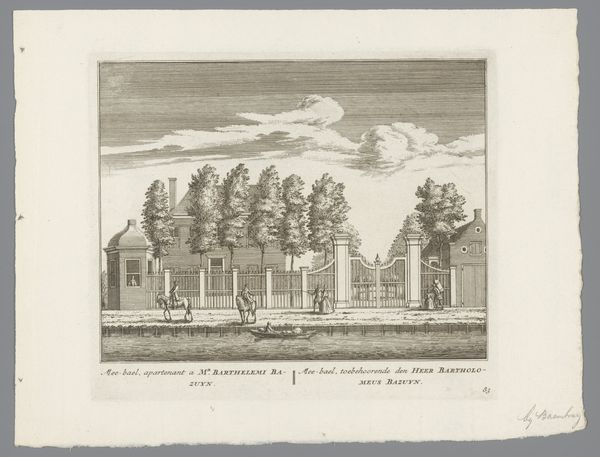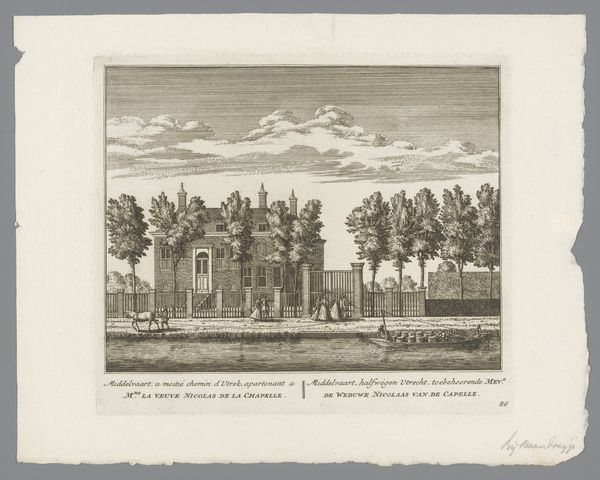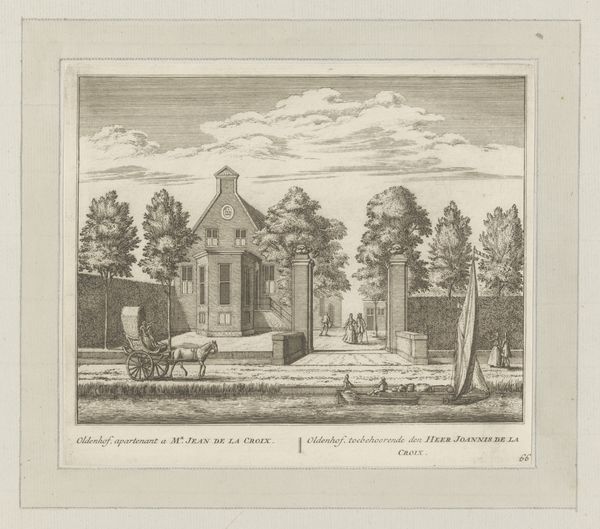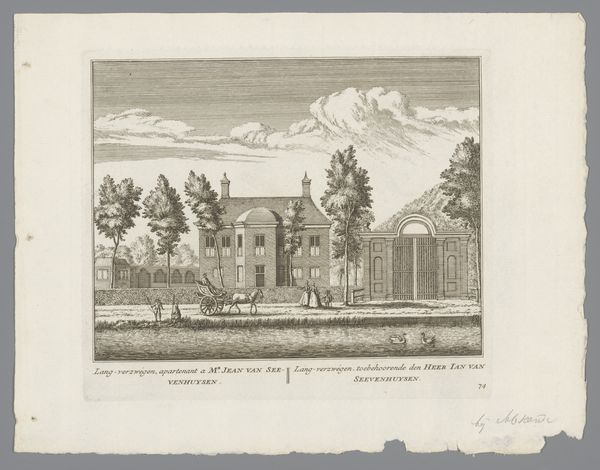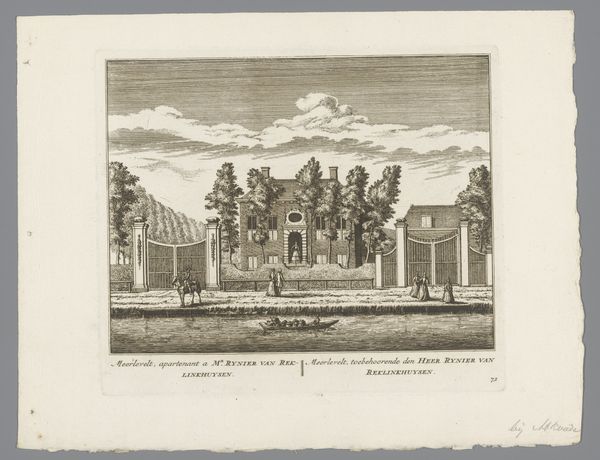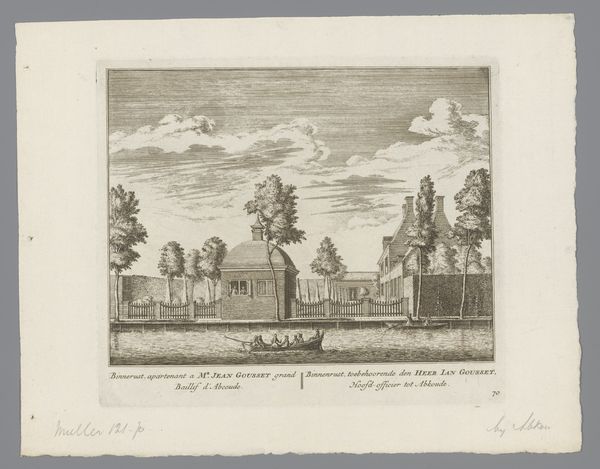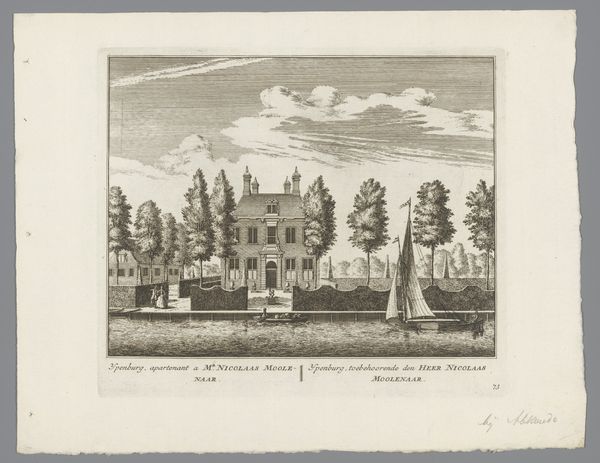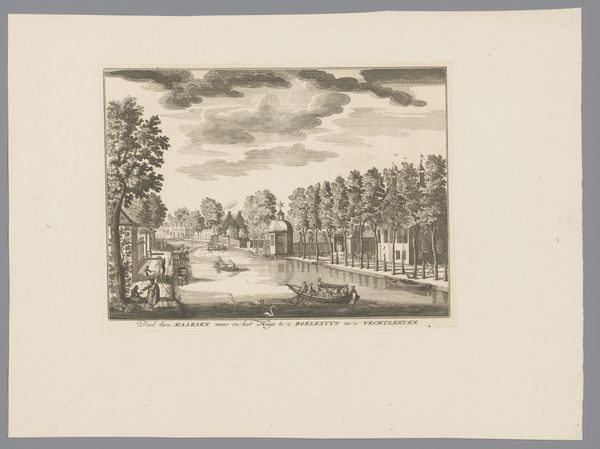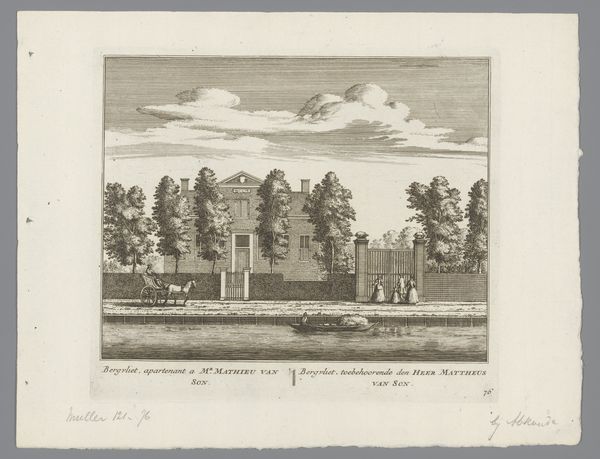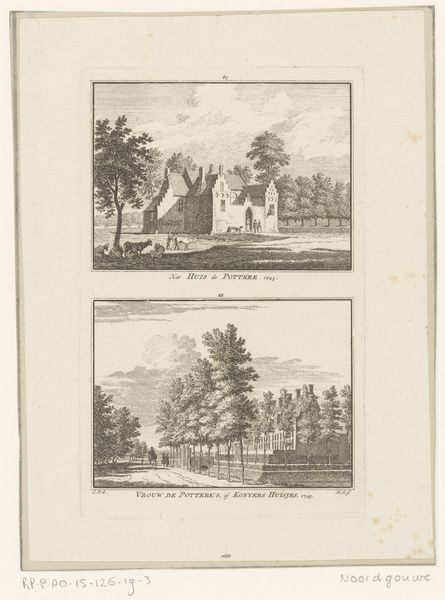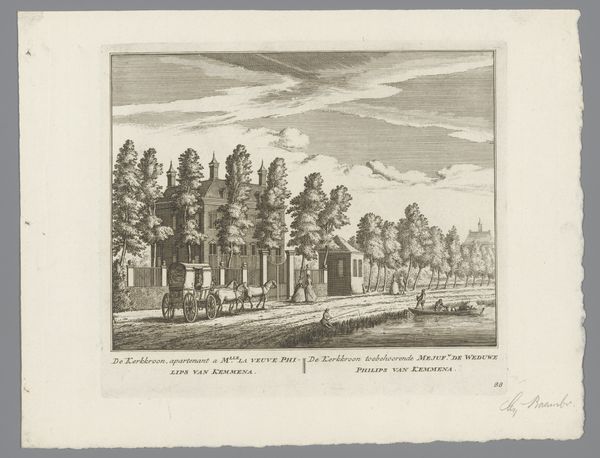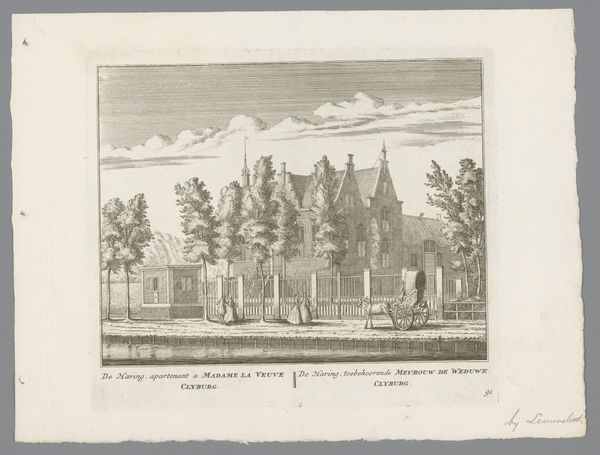
engraving, architecture
#
baroque
#
old engraving style
#
landscape
#
line
#
cityscape
#
engraving
#
architecture
#
realism
Dimensions: height 169 mm, width 197 mm
Copyright: Rijks Museum: Open Domain
Editor: This is *Gezicht op de buitenplaats Zorgvrij*, an engraving made between 1725 and 1730 by Leonard Schenk. It depicts a stately home. What strikes me is how much emphasis is placed on the land and property; it's more than just a building portrait. What are your thoughts? Curator: Indeed. We see here a carefully constructed image designed to project social status and power. The choice to present it as a 'gezicht', a view, is crucial. It's not merely depicting architecture, but an entire cultivated landscape, a visual representation of ownership and control. Consider where this image might have circulated – perhaps among potential buyers or as a symbol of achievement. How does this inform our understanding of Dutch society at that time? Editor: So, it's like advertising prestige? I hadn't considered its use. It looks serene on the surface. Curator: Precisely. Serenity, but also calculated self-promotion. The estate's design is probably a deliberate manipulation of nature into art, a fashion at that time and is presented to a particular audience. Consider the almost staged activities of the figures. How might their placement within the image contribute to the overall message? Editor: They are sort of... posing, almost like staffage. The people really give it context. It feels as if the engraving's audience are meant to appreciate the efficiency or elegance of life on the estate, everyone in their rightful place. Curator: Exactly. Now, think about the engraving as a commodity itself. Who commissioned it? What social role did images like these play in shaping perceptions of wealth and class in the Dutch Republic? What do we really know about how art impacted social structure back then? Editor: I'm starting to view this not just as art, but as a kind of historical document that says so much more about the values of that era. Thanks! Curator: An excellent observation! Thinking about art as enmeshed within socio-political systems changes how we appreciate images and objects of this period.
Comments
No comments
Be the first to comment and join the conversation on the ultimate creative platform.
